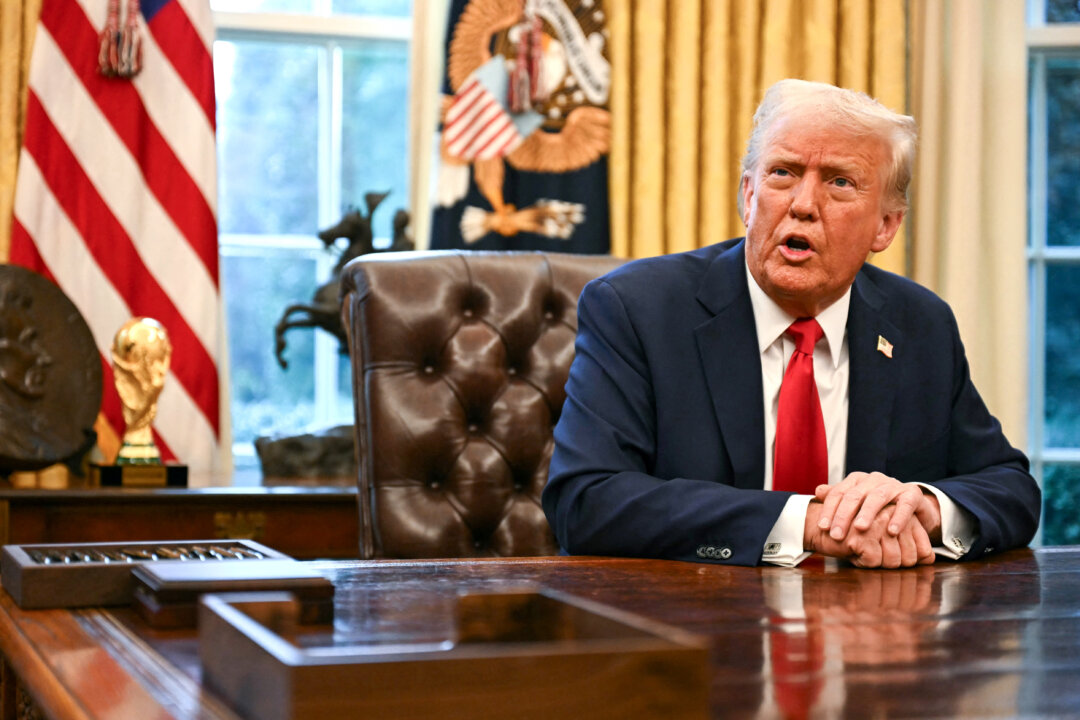The president’s plan centers on renewing key provisions of his 2017 tax cuts while eliminating taxes on tips, overtime pay, and Social Security benefits.
President Donald Trump outlined his tax agenda to Republican lawmakers at the White House on Thursday, according to press secretary Karoline Leavitt, who described the plan as “the largest tax cut in history for middle-class working Americans.”
Leavitt told reporters outside the White House on Feb. 6 that Trump’s plan centers on renewing key provisions of his 2017 tax cuts while eliminating taxes on tips, overtime pay, and Social Security benefits.
The president also aims to end tax breaks for billionaire sports team owners and close the carried interest loophole, which allows private equity fund managers to pay lower tax rates on their earnings.
In addition, Trump is advocating for tax incentives for U.S.-made products and an adjustment to the state and local tax (SALT) deduction cap, a top priority for Republicans in high-tax states.
“This will be the largest tax cut in history for middle-class working Americans,” Leavitt said. “The president is committed to working with Congress to get this done.”
Republican lawmakers have been struggling to agree on how to structure Trump’s tax plan while balancing other priorities like border security and spending cuts. A key debate is whether to package these priorities into a single bill or pursue a two-step approach with separate legislation for tax policy and border security.
Initially, Trump backed the idea of a single, comprehensive bill, saying in a January social media post that tariffs could help offset the costs. He urged Republicans to unite quickly and pass the legislation, which he said would deliver a series of “historic victories” for Americans. “Get smart, tough, and send the Bill to my desk to sign as soon as possible,” he wrote.
At a Jan. 27 GOP retreat, however, Trump signaled flexibility, saying he was open to either approach as long as his agenda moved forward. “We don’t want to get hung up on the budget process … whether it’s one bill, two bills, I don’t care,” he told lawmakers.
House Speaker Mike Johnson (R-La.) and Ways and Means Chair Jason Smith (R-Mo.) are pushing to bundle tax cuts with other GOP priorities, including border security and deregulation, into a single bill. However, Senate Republicans, led by Majority Leader John Thune (R-S.D.) and members of the House Freedom Caucus, prefer a two-step process—passing a smaller bill focused on border security and defense first and addressing tax policy later.
Sen. Lindsey Graham (R-S.C.), chairman of the Senate Budget Committee, is leading the Senate’s effort to prioritize border enforcement first. His proposal for a $300 billion bill would increase funding for border enforcement, deportations, and Immigration and Customs Enforcement (ICE) agents while rolling back some Biden-era green energy tax credits to help offset costs.
“This will be the most transformational border security bill in the history of our country,” Graham said in a Feb. 5 statement. “It’s time to act.”
Rep. Chip Roy (R-Texas) and other House Freedom Caucus members support Graham’s plan as an initial step toward funding Trump’s immigration and deportation agenda while Republicans continue crafting a larger tax and spending cuts package.
Whether through one bill or two, Republicans will need near-total party unity to advance Trump’s tax cuts and immigration policies, given the GOP’s narrow majorities in both the House and Senate.

